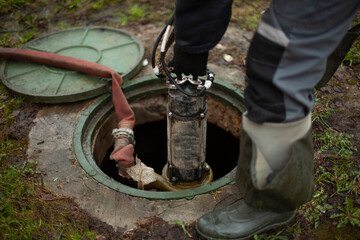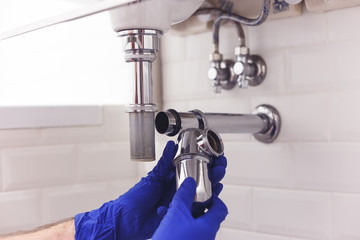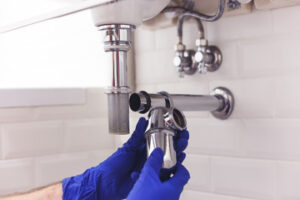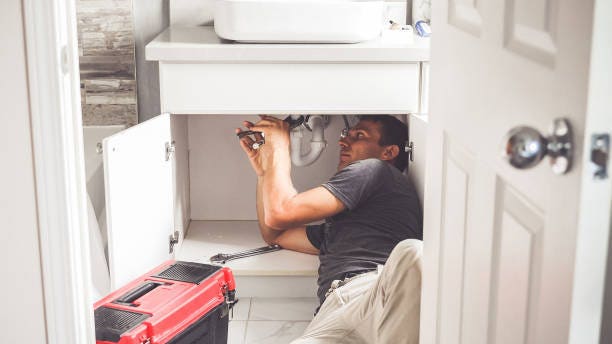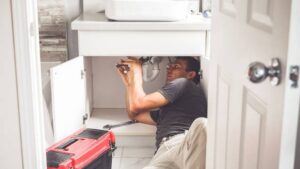If you think your home’s drains are acting up, calling for a sewer repair service is a good idea. This will help prevent costly water damage in the future.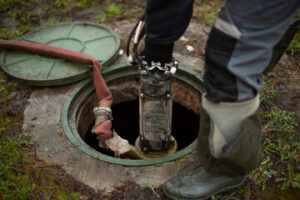
Plumbers Sarasota will use a camera to locate the problem area. They will also mark the location of utility lines and other below-ground obstructions with spray paint.
We rely on our sewer lines for everyday functions, but often don’t think about them until they start having issues. Damaged sewer lines can lead to sewage back-ups, which could affect your health and the structural integrity of your home. Knowing the warning signs and how to repair a damaged sewer line can save you from costly disasters.
Sewer lines are prone to damage from many factors, both outside and inside the pipes. Outside, tree roots can grow and break the line, and the pipes themselves can become cracked or corroded from age or use. Inside the house, flushing items that shouldn’t go down the drain can cause the line to clog. Over time, this can lead to sludge buildup, which causes sewage backups and other unpleasant symptoms.
Fortunately, there are ways to repair a damaged sewer line without tearing up your property. One option is hydrojetting, which involves shooting water at high pressure to clear out the clog and clean the line. In some cases, this method is all that’s needed, but in more severe cases, a replacement may be necessary.
Other options include traditional trenching, in which a plumber digs up and replaces all or part of the pipe. This can be a very expensive process, but it’s sometimes the only way to get the job done.
Another option is pipe bursting, in which a new HDPE (high-density polyethylene) pipe is pulled through the old one and shatters it as it goes. This is a much less invasive method, but it’s only suitable for certain situations, such as replacing pipes that have disintegrated or collapsed.
Pools of Septic Water
When septic systems are functioning well, water in the drain field stays put. When they aren’t, wastewater can leak out into the soil, which isn’t good for people, plants or the environment. If you notice puddles or pools of wastewater around your septic system, you should call for a repair before the problem worsens.
A conventional septic system is a popular onsite wastewater treatment method for residential properties that aren’t connected to a public sewer system. Wastewater enters the septic tank through pipes, where solids settle to the bottom and bacteria break them down. Wastewater then flows to the drain field, a series of perforated pipes or trenches buried in the soil that filter and further treat the effluent before it returns to groundwater.
If the septic tank lid and risers aren’t water tight, groundwater can leak into the septic system and overwork the drain field. This hydraulic overload can cause the septic system to fail.
You can prevent groundwater infiltration by making sure that all driveway, house and garden drainage is directed away from the septic tank and drain field areas. You can also prevent septic system overwork by keeping up with your septic tank pumping schedule.
If your septic system is in need of repair, contact your county’s program manager or the State Septic System Replacement Fund program to see if you are eligible for assistance. Some counties have secured Community Block Development Grant funds to supplement the State’s assistance program, so be sure to check with your local government to see if funding is available in your area. In addition to septic system repair, the EPA requires periodic inspections and cleaning of your septic system.
Slow Drainage
Drains are essential for your home’s function, but they can be vulnerable to blockages that limit their flow. Even a small obstruction can grow over time, causing water and waste to back up into your sink, tub or toilet and potentially entering your house. That’s why you should schedule regular plumbing service to clean and inspect your drain and sewer lines.
A slow drain can be caused by a number of things, from hair to soap scum and sticky food scraps. But, it’s also possible that a bigger problem is to blame. Slow drainage could indicate that there’s an issue with your home’s drain pipes, main sewer line or septic system.
Most of the time, a slow drain is easy to fix. You can use DIY methods such as vinegar, boiling water or baking soda to dislodge gunk and clear the drain. But, if the obstruction keeps coming back or is too large to remove, it’s time to call in professional help.
If you have multiple clogged drains, it may be an indication that there’s an issue with your drain or sewer line pipes. A plumber can inspect your pipe with a camera and determine the best course of action to solve the problem.
Most of the time, a slow-draining sink is the result of a buildup of material in the drainpipe or trap. If this is the case, you can try to manually clean the drain using a tool like a bent wire coat hanger. It’s important not to use caustic chemical drain cleaners as these can damage the pipes. The best option is to call in a plumber for professional drain cleaning and sewer repair.
Disgusting Smells
The foul smell of sewage is often the first clue that something is wrong with your home’s plumbing. If this smell persists despite opening the windows and using an air freshener, you may need professional help to get it under control.
A rotten sewer smell is caused when hydrogen sulfide, a naturally occurring gas produced by sewage, escapes through your drain lines. A properly functioning plumbing system will direct this gas into the outdoors and away from your house, but when it escapes through broken, clogged, or missing pipes, the smell can permeate your whole home.
There are many possible causes of this problem, from biofilm accumulation to a clogged or disconnected sink drain. You can try a few DIY solutions such as cleaning the drains with bleach and a drain snake or making sure there’s water in your P-trap, but if the odor continues to permeate your bathroom it’s time to call a plumber.
A plumber will be able to conduct a smoke test to locate the source of the problem, and they will have the tools and experience needed to fix it quickly and efficiently. Once they’ve found the source of the leak, they can replace the damaged pipe and restore your home’s plumbing to proper working order.
If you suspect your sewer line is leaking, contact Goodbee Plumbing today. Our expert plumbers can conduct a full inspection and identify the source of the issue without damaging your home’s plumbing or the surrounding area. With our same-day service, we’ll be able to get the stinky sewer smell under control and repair your drains as soon as possible.
Mold
Mold can grow wherever there is dampness, and it often happens in a home that has a sewer leak. When mold spores land on a wet spot they begin to digest whatever they are on, including wallpaper, wood, fabrics, soap scum and even paint and caulking. If the mold is left unchecked, it can rot and cause structural damage to a building and furnishings. Mold can also aggravate allergies in some people, making it important to get mold remediation done quickly.
A good way to test for a leaky sewer line is to have a plumber visit your home and run some tests. They will use a special camera to track down the source of the leak. Once they find the problem, they will either dig up the affected section of pipe or opt for trenchless sewer repair. The trenchless method uses an epoxy resin to seal the leaky area of the pipe, and it can work with PVC, cast iron and clay pipes.
Once the plumbing repairs are finished, the next step is to get rid of any mold that has grown. Mold remediation is typically done by a professional company. The process includes misting the contaminated area to control airborne spores, cleaning and removal of all wet materials (including porous items that cannot be cleaned such as carpeting and carpet padding, wallpaper, insulation material, wood and some clothing), and disinfection.
When a property owner hires a mold remediation company to perform the task, they can rest assured that they are working with a licensed and reputable contractor. The company will work closely with the property owner to ensure that mold remediation is performed while minimizing downtime for their business.

